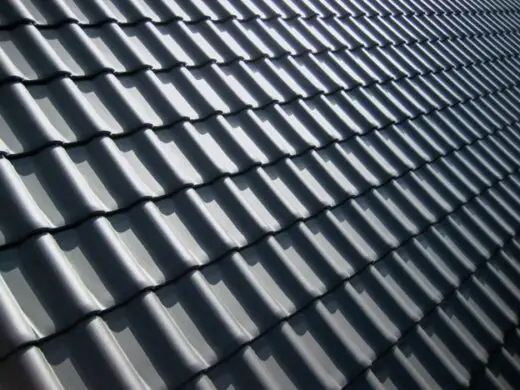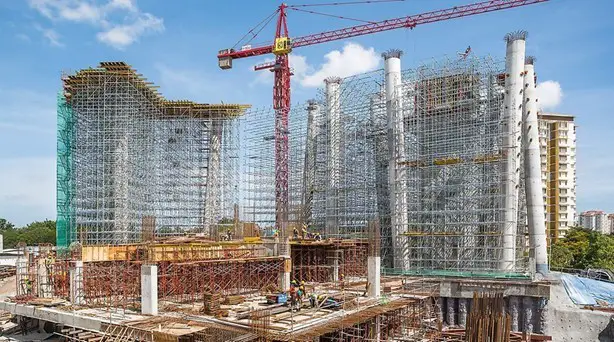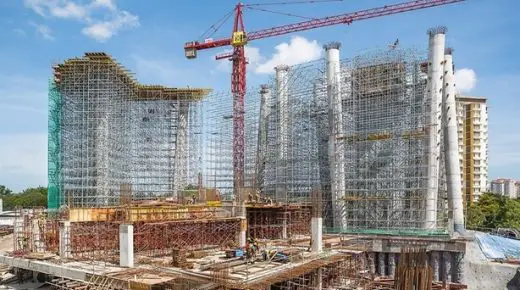Comparative analysis of 5 building methods and advantages and disadvantages, Construction design, Property build
Five Building Methods and Advantages and Disadvantages Comparative Analysis
8 Aug 2023
In the ever-evolving world of architecture, class 2 architects play a pivotal role in designing and constructing buildings that stand as testaments to innovation, safety, and sustainability. Thus, they play a vital role in class 2 buildings.
As these professionals venture into the realm of building construction, they encounter an array of methods, each with distinct advantages and drawbacks. From the time-tested charm of wood frame construction to the robustness of reinforced concrete, the flexibility of steel frame buildings, the durability of masonry construction, and the efficiency of prefabricated structures, this comprehensive guide delves into the intricacies of 5 Building Construction Types.
By navigating through the pros and cons of these construction methods, class 2 architects can enrich their expertise, enabling them to make well-informed decisions and shape the architectural landscape with creativity and foresight. Join us on this enlightening journey, exploring the essence of construction methodologies that define the built environment.
A Comparative Analysis of 5 Building Methods and Advantages and Disadvantages
-
Wood Frame Construction
Wood frame construction is one of the oldest and most prevalent methods, especially in residential buildings. It involves using wood as the primary structural material. Here are its pros and cons:
Wood Frame Construction Pros:
- Cost-effective: Wood is readily available and relatively inexpensive, making it a cost-effective choice for many projects.
- Fast Construction: Wood frame buildings are quick to construct, reducing overall construction time.
- Insulation properties: Wood provides natural insulation, improving energy efficiency and lowering utility bills.
Wood Frame Construction Cons:
- Fire Risk: Wood is combustible, making wood frame buildings more susceptible to fire hazards.
- Durability: Over time, wood may degrade due to pests, moisture, and weather conditions, requiring frequent maintenance.
- Limited Height: Wood frame construction is typically limited to low to mid-rise structures.
-
Reinforced Concrete Construction
Reinforced concrete construction combines the strength of concrete with the flexibility of steel reinforcement, resulting in a versatile and durable building method.
Reinforced Concrete Construction Pros:
- Strength: Reinforced concrete can support heavy loads and withstand seismic forces, making it ideal for high-rise buildings and infrastructure projects.
- Fire Resistance – Reinforced Concrete Construction: Unlike wood, concrete is fire-resistant, enhancing the safety of occupants.
- Longevity: Well-maintained concrete structures have a long lifespan, reducing the need for frequent repairs.
Reinforced Concrete Construction Cons:
- Cost and Complexity: Reinforced concrete construction can be more expensive due to the materials and skilled labour required.
- Environmental Impact: Concrete production has a significant carbon footprint, contributing to environmental concerns.
- Cracking: If not designed and constructed properly, concrete structures may develop cracks over time.
-
Steel Frame Construction
Steel frame construction employs structural steel as the primary building material. It is commonly used for high-rise buildings and large-scale commercial projects.
Steel Frame Construction Pros:
- Strength and Flexibility: Steel can withstand heavy loads and offers flexibility in design, allowing for open and customisable spaces.
- Speed of Construction: Steel structures can be erected quickly, which will ultimately help in reducing construction time.
- Sustainability – Steel Frame Construction: Steel is recyclable, making it an eco-friendly option.
Steel Frame Construction Cons:
- Cost: Steel frame construction can be expensive, especially when steel prices fluctuate.
- Corrosion: Without proper maintenance, steel is susceptible to corrosion, affecting its structural integrity.
- Thermal Conductivity: Steel is a good conductor of heat, which can impact energy efficiency in extreme climates.
-
Masonry Construction
Masonry construction involves using bricks, concrete blocks, or stones to build walls and other load-bearing elements.
Masonry Construction Pros:
- Fire Resistance: Masonry materials offer good fire resistance, enhancing safety.
- Sound Insulation: Masonry walls provide excellent sound insulation, creating quieter indoor spaces.
- Low Maintenance: Masonry structures are durable and require minimal maintenance.
Masonry Construction Cons:
- Limited Flexibility: Compared to steel or wood, masonry has limited flexibility in design.
- Weight: Masonry construction is heavier, necessitating strong foundations and structural support.
- Labour-Intensive: Building with masonry materials can be labour-intensive, increasing construction costs.
-
Prefabricated/Modular Construction
Prefabricated or modular construction involves assembling pre-made components off-site and transporting and assembling them on the construction site.
Prefabricated/Modular Construction Pros:
- Time Efficiency: Prefabricated construction significantly reduces on-site construction time.
- Quality Control: Components are manufactured in controlled environments, ensuring higher quality standards.
- Sustainability: Less waste is generated during the manufacturing process, making it more eco-friendly.
Prefabricated/Modular Construction Cons:
- Design Limitations: Prefabricated construction may have design limitations due to standardised components.
- Transportation Costs: Transporting large prefabricated elements to the site can be costly.
- Limited Customisation: It may not be as customisable as traditional construction methods.
Five Building Methods and Advantages and Disadvantages Analysis Conclusion
In conclusion, choosing the right building construction type depends on various factors such as project requirements, budget, location and the knowledge of the architects and design practitioner class 2. However, you should know that each method comes with its own set of advantages and disadvantages. By understanding these construction types and their pros and cons, architects, engineers, and homeowners can make informed decisions that ensure the creation of safe, functional, and aesthetically pleasing structures for generations to come.
As we conclude this comprehensive exploration, it becomes evident that the world of architecture and construction is a dynamic and diverse realm. This knowledge is invaluable for Class 2 registered architects and design practitioners, as they strive to create structures that harmonise aesthetics, functionality, and safety. Each construction method discussed here offers unique advantages and challenges, catering to specific project requirements and goals. Thus, it is necessary to keep all these in mind.
Comments on this Comparative Analysis of 5 Building Methods and Advantages and Disadvantages article are welcome.
Building Design
Building Designs
What You Need to Know About Replacing Your Roof

6 questions to ask when hiring residential roofing contractor
First Time Replacing Your Roof
Property
Residential Architecture
Comments / photos for the Comparative Analysis of 5 Building Methods and Advantages and Disadvantages – new flexible construction design page welcome






